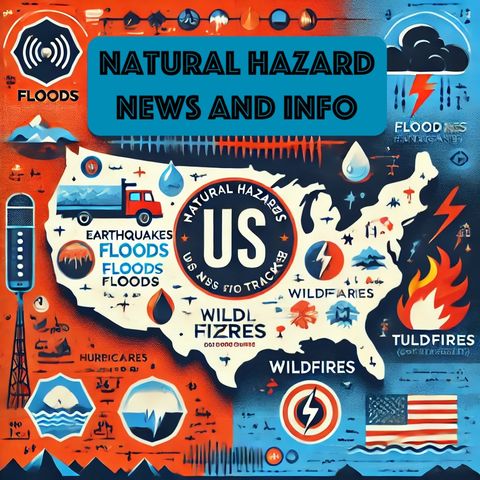Combating Erosion: Adapting to the Intensifying Impacts of Wildfires and Extreme Rain in a Warming Climate

Descarga y escucha en cualquier lugar
Descarga tus episodios favoritos y disfrútalos, ¡dondequiera que estés! Regístrate o inicia sesión ahora para acceder a la escucha sin conexión.
Descripción
A recent USGS-led study has revealed that the combination of increasing wildfire activity and extreme rain events in a warming climate is significantly intensifying erosion, leading to elevated sediment flow...
mostra másThe research shows that as temperatures rise, the frequency and severity of wildfires are increasing. These fires burn vegetation and organic matter, leaving the soil exposed and vulnerable. When heavy rains follow, the unprotected soil is more easily washed away, leading to significant erosion. This process dramatically increases the amount of sediment that is carried into rivers and other waterways.
This surge in sediment flow has several profound implications. One of the most immediate concerns is the impact on water quality. Increased sediment can carry pollutants, reduce water clarity, and harm aquatic habitats. This poses a threat to fish populations and other wildlife, which rely on clear, clean water for survival. Moreover, sediment-laden water is more difficult and expensive to treat for human consumption, putting additional strain on water treatment facilities.
Infrastructure is also at risk. High sediment flow can clog reservoirs and dams, reducing their storage capacity and effectiveness. It can also cause blockages in irrigation systems, leading to reduced agricultural productivity. Bridges, culverts, and other structures are susceptible to damage from increased sediment deposition or erosion around their foundations, posing safety risks and potentially leading to costly repairs.
The study emphasizes the need for integrated land and water management strategies to mitigate these effects. Maintaining healthy vegetation cover is crucial for stabilizing soil and reducing erosion. This can be achieved through targeted reforestation efforts, controlled burns, and other land management practices that promote soil retention and reduce the likelihood of severe wildfires.
Moreover, enhancing forecasting and early-warning systems for both wildfires and extreme rainfall events can help communities prepare and respond more effectively. Improved predictive models can aid in preemptive actions, such as the strategic management of vegetation and the reinforcement of vulnerable infrastructure.
In conclusion, the intersection of increasing wildfire incidents and extreme rainfall is escalating the risks associated with erosion and sediment flow. This presents daunting challenges to water quality and infrastructure integrity but also underscores the urgent need for adaptive management strategies. Proactive measures and coordinated efforts can mitigate some of these impacts, helping to protect vital resources and ensure the resilience of affected communities.
Información
| Autor | QP-4 |
| Organización | William Corbin |
| Página web | - |
| Etiquetas |
Copyright 2024 - Spreaker Inc. an iHeartMedia Company
